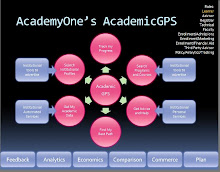The Obama Education Plan1 is a compilation of messages, comments and high level priorities assembled to articulate one of the key priorities of the new Administration. The book covers proposals for Pre-K through 12th grade, education reform, and college affordability and access. The book’s introduction states the goals for education will take an extraordinary level of leadership, resources, consensus and collaboration to enact. However, something is missing in the discussion. No mention is made of using or leveraging the country’s existing technology assets in a more effective way to hasten, support and enhance these reforms and policy changes.
President Obama knows and understands that technology is important, because he has appointed a lead person in the White House to address how we can better utilize technology. One of critical questions that needs to be posed during the discussion on education should be -- how do we retool the technology to support, and enhance America’s whole education system, P-12 and postsecondary institutions, to be more efficient and effective? For this effort to be successful requires leadership from the top to ensure the development of common terminology, common academic progress measures, and an IT framework that replaces isolated methods and structures costing our education enterprise $50 billion annually. Of this amount, $25 Billion is spent patching together data systems, moving data between users, and using tools and external reporting mechanisms ineffectively and inefficiently.
Today’s highways, roads and freeways were developed and built to replace dirt and inefficient roads in the 20th century because the country’s leadership, especially President Eisenhower, realized mobility and a quality infrastructure were critical to growing commerce. A shared technology platform can be developed to address these new reforms and will be more flexible and agile, reduce the burden of bureaucracy and create lower costs, if a similar form of leadership and investment is made. This platform would respect institutional autonomy, mission and purpose. It is an enormous challenge because there is a split across the States and thousands of stakeholders, but the time is right. The President’s education agenda along with the current economic situation, and the potential for serious collaboration between P-12 and higher education leaders presents a unique opportunity for a success.
The present cost of maintaining the status quo in data management is the inefficient and ineffective use of the annual investment society makes in the nation’s education systems. The current use of technology in structuring and managing these data systems has limited payback or value given the isolated designs and deployment. It does not have to be this way. By creating a new technology platform, the nation’s education systems can share definitions, be interoperable, build new tools to foster transformation and reform, improve measurement, and enable aligned efforts.
The call for better data management is powerful, whether at the macro level serving policy, at a governance level serving administration of schools and institutions or at the micro level serving learners. Developing comparable data measures and managing data movement has never been harder or more costly to education. Tracking academic progress, through the student life cycle, from the onset of aspirations to the success of learners and attainment of various milestone credentials is critical. The industry needs electronic bridges to optimize student placement, assessment, progress reporting and the interchange of data along the pathway of achievement. Band-aiding more and more applications and systems on top of an already out-of-date platform is not the solution. Leadership is needed to push for synchronized reforms and retooling technology. Duplicative efforts make things worse by increasing an already taxed system. Today’s academic and administrative systems lack interchange and workflow standards that can radically empower learners, engage faculty, reinvent management, link governance and bridge policy needs with useful, transparent and functional information designed from the beginning to serve these purposes. Therefore, technology needs to be visibly added to the President’s Education Plan that focuses upon the critical retooling needed for the American education system to remain competitive.
A new technology platform will support the collaboration articulated in the book, but impossible to achieve under current technology architectures used in education. The solution is not an exotic technology or something that is extremely esoteric. It is about cooperation, incentives to cooperate, common data definitions, and a shared vision that collaborative efforts are essential to achieve accountability, quality data management, improved assessment, transparency, increased access and affordability in higher education; and improved alignment between, elementary, secondary and postsecondary education, as well as with workforce development.
1 The Obama Education Plan, An Education Week Guide, Published 2009 by Jossey-Bass,
989 Market Street, San Francisco, CA 94103-1741 ISBN 978-047-048209-4
Tuesday, April 28, 2009
Subscribe to:
Posts (Atom)

